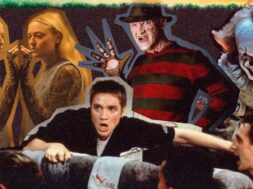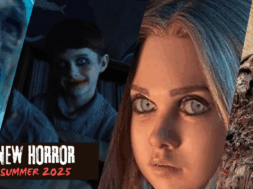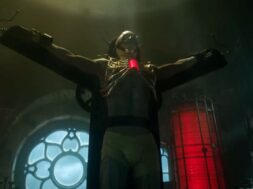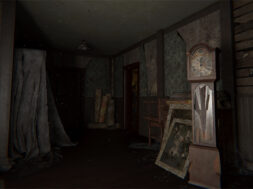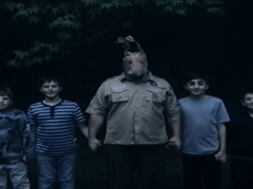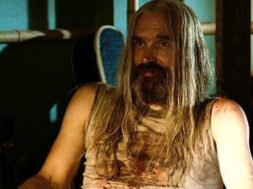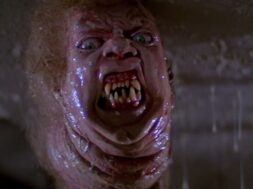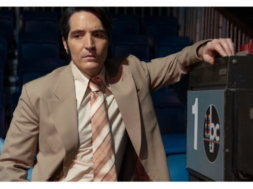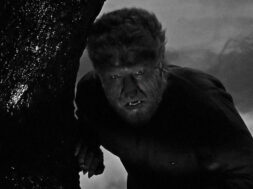
Moviegoers who recently checked out Turtles All the Way Down and The Watchers received a pleasant surprise. Preceding each motion picture was a swanky updated version of the classic New Line Cinema logo. It was bound to inspire nostalgia in viewers of a certain age, and there was one thing missing. There was no Warner Bros. logo in sight.
Since 2011, New Line Cinema has been trapped in a logo that permanently intertwined the studio with Warner Bros. Pictures. It looked bad and the visual approach of having pieces of the Warner Bros. shield fly out to form the New Line Cinema logo was always such a strained concept. Finally, though, a long national nightmare for cinema geeks with no life was over.
The Watchers emerging as one of the first films sporting this revamped New Line Cinema logo is incredibly fitting. After all, this studio has a rich history with horror cinema. Whether it’s 1974 or 2024, New Line Cinema has always lived in the realm of scary movies. One might even say New Line Cinema is a key studio in American horror cinema’s history.


The origins of New Line Cinema date back to 1967, entering at the end of a tumultuous decade for Hollywood. New artists pushed the boundaries of theatrical American entertainment. Heck, the Hays Code (which had greatly restricted what material American movies could and couldn’t depict since the 1930s) was just a year away from collapsing. A new era was dawning for this country’s theatrical entertainment. New Line Cinema founder Robert Shaye sought to exploit those opportunities with a new kind of film distributor.


In the 1970s, New Line Cinema largely acquired foreign-language titles like The Street Fighter and Get Out Your Handkerchiefs. However, during this decade, the studio also began its foray into horror cinema. In 1970, New Line Cinema distributed Multiple Maniacs. This John Waters feature occupied the realm of horror alongside multiple other genres. In 1976, the distributor would also handle the domestic release of The Cars That Ate Paris. The transgressive nature of these and other New Line Cinema releases like Immoral Tales reflected the distributor’s 1970s counterculture vibes. However, New Line Cinema would garner a new horror-themed identity by the 1980s thanks to one surprise hit.
In the early 1980s, director Wes Craven couldn’t get any studio to finance A Nightmare on Elm Street. Just as Craven was struggling to get this unique scary feature off the ground, New Line Cinema was rebranding itself. In a Vulture oral history about A Nightmare on Elm Street, filmmaker Jack Sholder recalled New Line began the ’80s with a desire to expand into making movies in-house. Because horror was a cheap genre with lots of mainstream appeal, that was the genre the studio focused on.
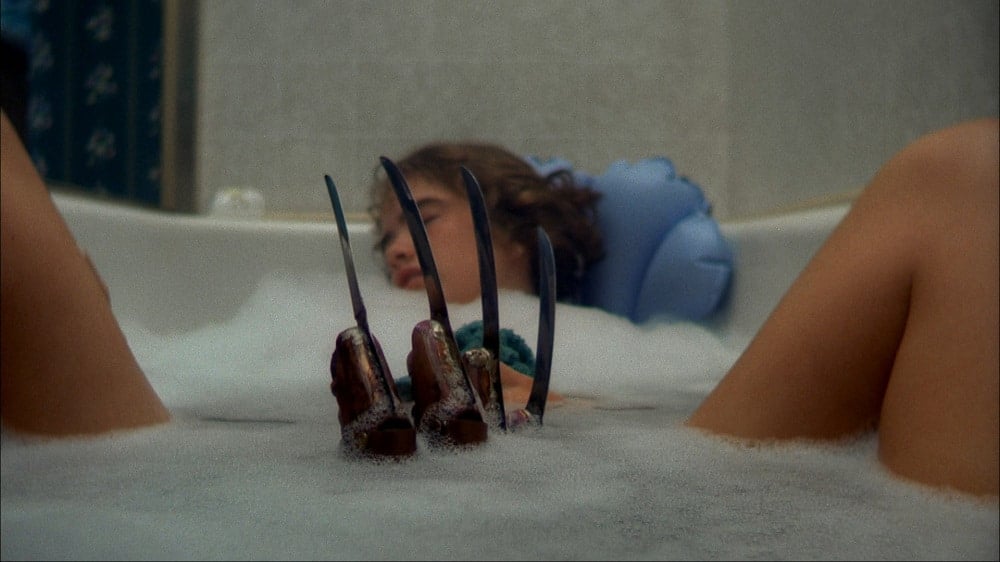

Initially, horror films produced in-house at New Line Cinema (Alone in the Dark) didn’t take off at the box office. Such flops didn’t ward off the studio’s steadfast commitment to the genre. This extended to Shaye being so excited by Craven’s vision for A Nightmare on Elm Street that New Line Cinema quickly backed the project.
All it takes is one movie to turn a studio from an unknown entity to a major player. So it was with New Line Cinema and A Nightmare on Elm Street. The massive box office haul of that horror feature propelled New Line Cinema to such exciting new heights that the studio would eventually take on the nickname “The House That Freddy Built.”


A slew of Nightmare sequels would follow. By the end of the 1980s, other horror movies carried the New Line Cinema logo. This included titles like Communion, 976-EVIL, and the first two Critters movies. For its first 1990s feature, New Line Cinema released Leatherface: The Texas Chainsaw Massacre III. This kicked off the studio attaching itself to other big horror franchises beyond the Elm Street features.
The endless sequels for Elm Street and Critters demonstrated that New Line Cinema’s horror exploits could be just as cynical as big studio features. Nobody in Hollywood is immune from the siren song of franchise revenue. However, the small scale of New Line Cinema could, in its best moments, allow the studio to take a chance on riskier original horror concepts like Final Destination.


Even the original Blade, a superhero/horror hybrid feature, came at a time when Marvel Comics adaptations were radioactive in Hollywood. Not many would take a chance on that character. New Line Cinema did, just as it plunged headfirst into A Nightmare on Elm Street back in 1984.
Well into the 2000s, New Line Cinema continued releasing hit horror movies. The 2003 Texas Chainsaw Massacre remake and the initial Final Destination sequels were especially major box office players. However, some key problems began emerging in the studio’s reputation. For one thing, the Elm Street franchise had run its course. That wasn’t innately bad, but there wasn’t a steady stream of beloved one-off horror titles to replace that saga.
Instead, the massive success of New Line Cinema’s Lord of the Rings inspired the studio to pivot its focus. The days of emphasizing foreign-language movies for the U.S. were long gone. Even New Line’s horror-centric days were fading fast. New Line Cinema no longer wanted the next A Nightmare on Elm Street. Executives were now looking for the next blockbuster to replicate everything Lord of the Rings had accomplished.


This shift in priorities led to the infamous box office underperformer, The Golden Compass. That fantasy epic inspired TimeWarner (New Line Cinema’s parent company) to shut down New Line Cinema as an independent company. New Line Cinema would now just be a Warner Bros. division releasing a handful of genre films annually. Robert Shaye was out of the picture entirely. New Line Cinema seemed doomed to wither away. Perhaps Warner Bros. would erase it entirely after they finished releasing whatever New Line titles were on a shelf when the label went under.
New Line Cinema eventually restored its name with the same genre that treated it so well 30 years earlier. After years of riding the fumes of sequels to pre-2008 hits like Lord of the Rings and Harold & Kumar, New Line Cinema got one of its first original hits for Warner Bros. in July 2013 thanks to The Conjuring. With that, a new cinematic universe was born.


Not only that, but New Line Cinema found a new genre to orient the entire company around. In the years that followed, New Line Cinema’s logo went out on several new horror movies. These ranged from further Conjuring installments to original scary features like The Gallows, Lights Out, and Malignant. New Line Cinema was also the production company responsible for both of Andy Muschietti’s It movies. Those made a pretty penny for Warner Bros.


New Line Cinema made its initial mark on Hollywood and audiences by offering something different. A Nightmare on Elm Street was not a production that fit into a readily marketable box. It was just a good concept that artists believed in. The greatest of New Line’s efforts in distributing and financing horror movies lived up to that artistic impetus. However, the studio lost its way (and eventually ceased operations as an independent entity) thanks to chasing the kinds of tentpole movies every studio pursues.
Horror has served New Line Cinema well, and this has been true from the 1980s to the 2020s scary cinema landscape molded by The Conjuring and It. Here’s to hoping that snazzy throwback logo indicates a hopeful future for New Line Cinema’s continued horror exploits.
